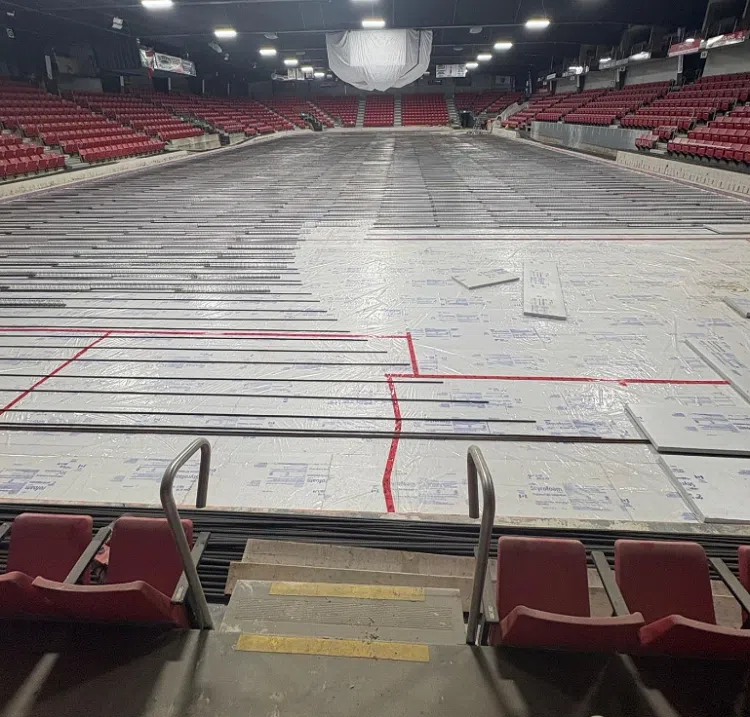The major renovation project at Owen Sound’s Harry Lumley Bayshore Community Centre remains on time, and on budget.
The city’s Manager of Arena Operations Ryan Gowan provided an update on the $2.3-million project during Wednesday’s community services committee meeting.
The old boards, glass and concrete floor inside the arena have all been removed. Gowan told committee members much of the old material was sold or repurposed for other uses, instead of being sent to a landfill.
New insulation’s been installed. And now, work is ongoing to install new piping before the new concrete slab is poured. That’s expected to happen July 29.
“It’s about nine miles of piping that will be put under the new surface,” Gowan says.
He says the new boards, netting and acrylic (hockey glass) will be installed starting in mid-August, after the new concrete floor has cured.
“The project continues to remain on schedule for completion by September 3,” Gowan tells committee members. “And ice installation will be finalized, hopefully by September 12, well in advance of the Attack’s home opener.”
The major renovations inside the Bayshore — home of the Ontario Hockey League’s Owen Sound Attack — began in April. In addition to the ongoing work to replace the arena floor, boards and glass, Gowan says the concourse, dressing rooms and downstairs hallways have been re-painted. Some dressing room benches and doors were replaced, and the banquet hall flooring changed.
Once completed, the updated arena floor at the Bayshore is expected to offer much better ice quality. Gowan mentions the old slab — original to the 1983 building — was actually was the correct size and wasn’t what contributed to ice quality issues.
“There had always been a thought that the original floor was poured thicker, which led to ongoing ice challenges over the years. But, it was confirmed this was a six-inch slab, which is standard,” Gowan explains. “However, it was found the original brine lines were buried nearly three inches deep in slab. This depth significantly limited heat transfer, and contributed to those noted less than ideal ice quality issues.”
He says the new lines are being set at the correct depth — around 1.5 inches — which will improve both ice conditions and energy efficiency.




